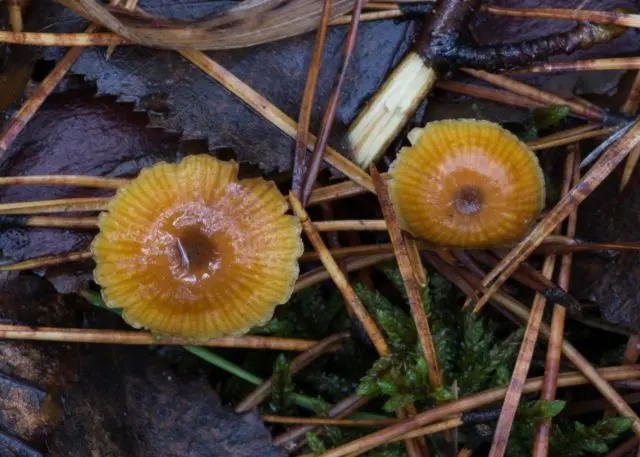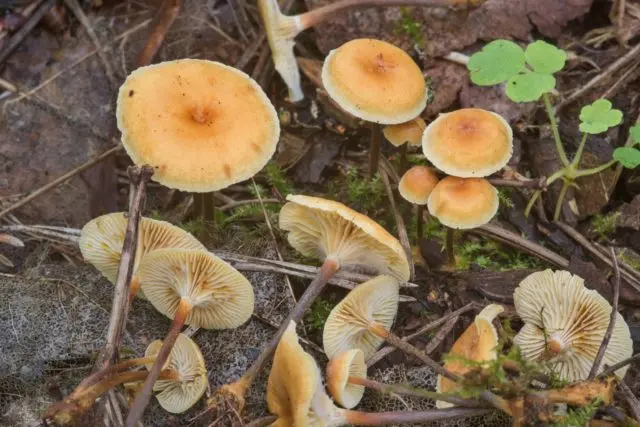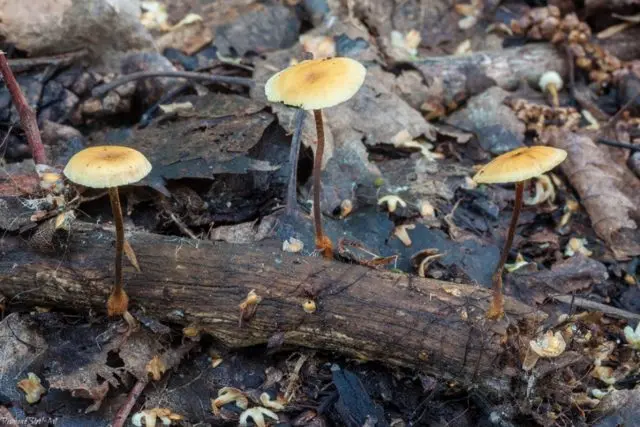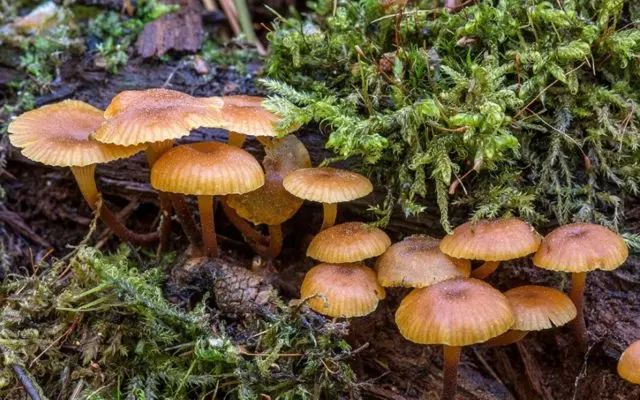Contents
Xeromphalina stalk belongs to the Mycenaceae family, and has two names – Xeromphalina cauticinalis and Xeromphalina caulicinalis. Their difference is only in one letter in the last word, and this is due to an ancient typo in the second name. Thus, the first option is considered correct, however, in some sources one can also find Xeromphalina caulicinalis, which describes the same type of mushroom.
What do xeromphalins stalk look like?

This specimen is a fruiting body with a pronounced cap and a thin stem. The size of the cap in diameter varies from 0,5 to 3 cm. At a young age it has a convex shape, then it becomes prostrate or widely raised with a small tubercle in the center and wavy edges. The surface is smooth, after rain becomes sticky. The color of the cap can be brown or reddish with a dark brown spot in the center. The plates of Xeromphalina stalk are sparse and translucent, in young specimens they are pale yellow or cream, and in older specimens they are yellow or yellowish-ocher.
The leg of this species is hollow and thin, the thickness of which is only 1-2 mm, and the length varies from 3 to 8 cm. From top to bottom, it expands significantly, up to about 5 cm. The color is yellowish or yellow-red above with a smooth transition from brown to black. Elliptical spores, uncolored. The pulp is brittle and thin, yellowish in color.
Where do xeromphalins stalk grow?

Favorable time for the development of xeromphalina stalk occurs at the end of August. In the absence of frost, it grows until late autumn. Prefers coniferous and mixed forests, grows in large clusters on coniferous litter, as well as among mosses, cones and pine needles.
Is it possible to eat xeromphalins stalky
This specimen is not included in the category of poisonous mushrooms. However, most reference books state that xeromphalina stalk has no nutritional value, so it is inedible.
How to distinguish stalk xeromphalins

It is worth noting that many types of fungi of the genus Xeromphalin are similar to each other. A striking example is a variety called bell-shaped, the image of which can be found below.

In most cases, they all grow in groups, are small in size and have a similar color. To distinguish the species in question from others, attention should be paid to a more convex hat and a very thin stem. However, you should be careful when picking these mushrooms, as both options are inedible.
Conclusion
Xeromphalina stalk is found quite often not only in Our Country, but almost all over the world. However, it clearly does not enjoy popularity, since it is not considered usable.









